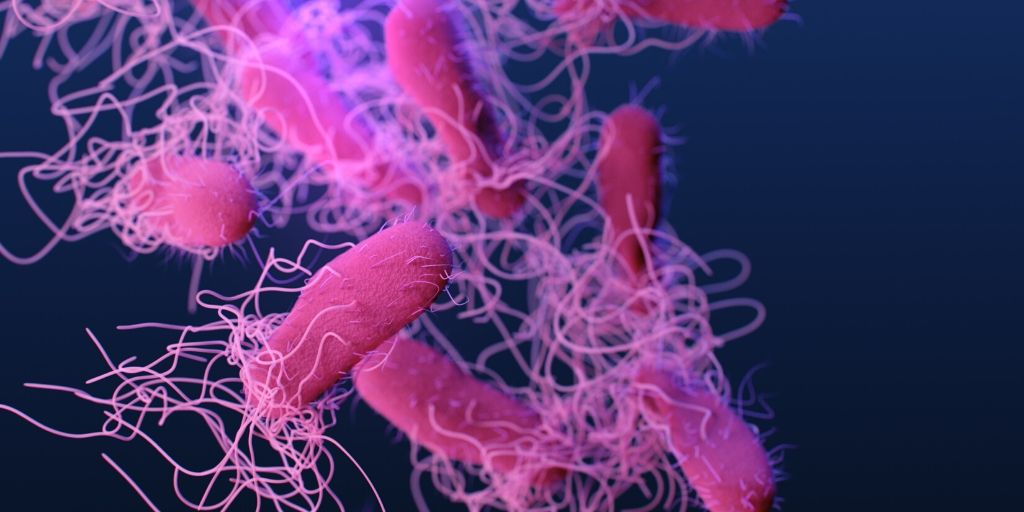- Home
- Knowledge library
- Salmonella in pigs
Salmonella in pigs
Learn more about salmonella in pigs and how to reduce the risk of infection.
What is Salmonella?
Salmonella is a type of bacteria, often found in both human and animal populations. It multiplies within the intestine and causes enteric disease.
Salmonella can survive for long periods of time within faeces, soil and dust, and can be spread by wildlife vectors including rodents and birds.
Salmonella are divided into serovars, categories similar to breeds of animals which have distinct differences between them. These differences can make them more likely to cause disease in specific animals.
Specific serotypes relevant to the pig industry include Salmonella Typhimurium and Salmonella Derby.

How does the disease spread?
Piglets and early growers are more commonly infected with clinical disease, which is usually short-lived. However, subclinical infection can persist for longer periods of time.
Salmonella can be spread via direct contact with another infected pig or contaminated faeces.
Wildlife including rodents, birds and cats can also harbour the bacteria, contaminating the environment that pigs live in.
Salmonella have also been found in animal feed and can survive in water.
What are the main signs of infection and how can it be prevented?
- The main clinical sign is diarrhoea, but other signs can occur. Please consult with your vet for more information
- The severity of Salmonella infection depends on the number of Salmonella bacteria present. The focus should be on decreasing the level of Salmonella in the environment and to lower the spread
- Biosecurity is an important aspect of control and prevention and more information can be found under the biosecurity section of the website
- An oral vaccine against Salmonella Typhimurium, the most commonly isolated serovar in pigs in the UK, is available for use in piglets from three days of age
What can be done to reduce the risk?
Maintaining good biosecurity is key to reducing the risk of Salmonella infection and contamination. This includes thorough cleaning and disinfection of equipment and housing, vermin control and testing animals coming onto the premises.
Pig producers can use the Salmonella Risk Assessment Tool on Pig Hub to identify any areas of risk on their farm. More information about biosecurity is available in the useful links section at the bottom of this page.
High levels of Salmonella at the abattoir can increase the risk of zoonotic spread of salmonellosis from cross-contamination between carcases. This is why we have been working closely with the pig industry for several years to reduce Salmonella levels at all stages of production, from the farmgate to the processor.
Legislation
EU legislation requires abattoirs to identify farms where pigs show regular Salmonella contamination.
The Food Standards Agency (FSA) closely monitors all abattoir test results and abattoirs will have to agree an action plan with the FSA if target levels are exceeded. The accepted level of incidence is 3 positives out of 50 samples over a 10-week period. This is the equivalent of 6% Salmonella prevalence.
Topics:
Sectors:
Tags:

